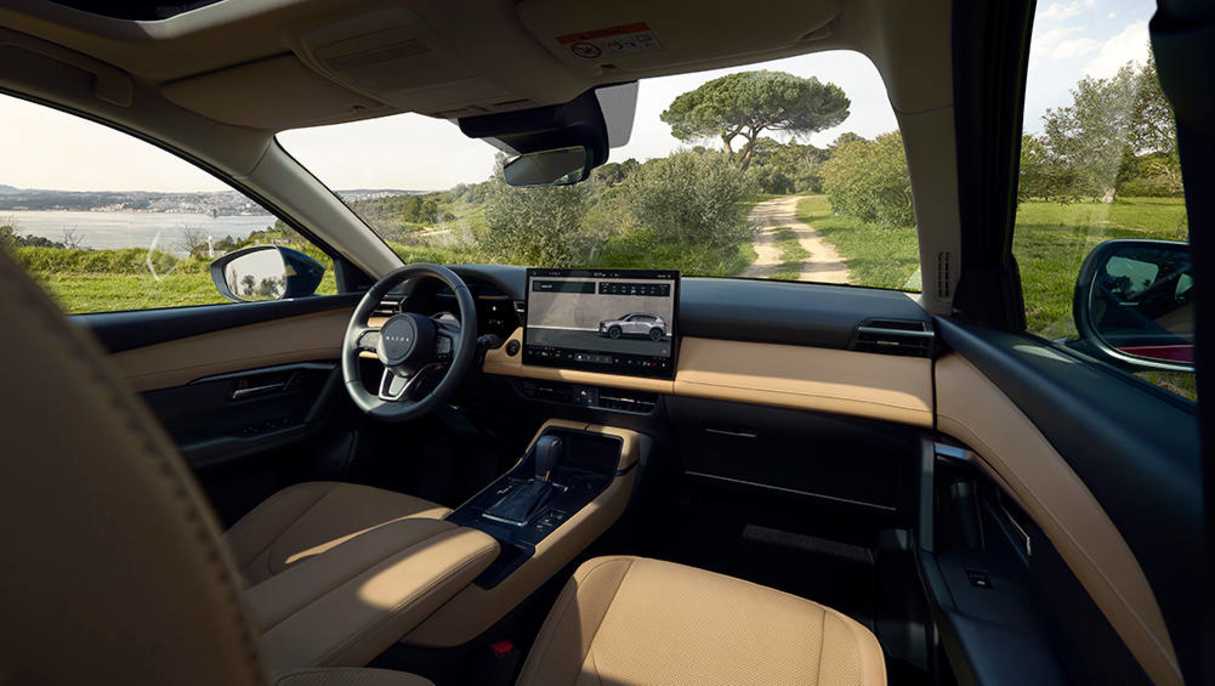Has Mazda just handed the advantage to Toyota?
The Japanese giant took the covers off its highly anticipated CX-5 recently, which featured eye-popping looks inside and out, bigger dimensions and more practicality, but something was missing.
Mazda’s much talked about in-house hybrid technology won’t be available when the car launches next year. 2027 might even be stretched, with the vital new tech earmarked for a US launch towards the end of that year, there is no certainty Australia will get it before 2028.
So Mazda shoppers holding out for a hybrid CX-5 will have to put their purchase on hold for more than two more years.
Until the hybrid arrives, the new CX-5 will make do with a detuned version of the current 2.5-litre non-turbo four-cylinder engine that will make 132kW and 242Nm, or 8kW and 10Nm less than the outgoing version. The turbocharged 2.5-litre option has been dropped from the range and will eventually be replaced by the hybrid.
The good news is it’ll smash the current turbo-powered CX-5 out of the water, with superior outputs and drastically lower fuel economy.
Mazda North America VP of Strategic Planning, Stefan Meisterfeld, told US publication CarBuzz: “The hybrid system will have performance that is comparable to or exceeding the turbo powertrain.”

That means it'll likely top the 170kW and 420Nm of the outgoing turbo CX-5.
That kind of performance will leave conventional hybrids in its dust.
But there is a storm cloud on the horizon for Mazda in the shape of the unstoppable Toyota RAV4.

Toyota is also launching a new version of its RAV4 at the start of 2026. It is only available with hybrid power. In fact, two types of hybrid power.
Next to its trusty 2.5-litre non-turbo hybrid that makes 143kW, which is 17kW and 20kW down on the current 2WD and AWD versions respectively, Toyota will finally have a plug-in hybrid alternative.
The PHEV will be available in two- and all-wheel-drive layouts. The front-wheel-drive version will make a total of 201kW and all-wheel-drive variants make 227kW and can hit 100km/h from a standstill in 5.8 seconds.
Toyota said it is aiming for an electric-only driving range of about 100km, as calculated by the benchmark WLTP test cycle.
That gives Toyota an almost two year head start to woo hybrid buyers with its RAV4 before the alternative CX-5 arrives, plus its plug-in hybrid puts it a step ahead of its rival.
Toyota Australia boss, Vinesh Bhindi, told CarsGuide: “Mazda continues to offer a multi-solution approach to reduce emissions and improve efficiency. The new 2.5L powertrain is an important component of this strategy, alongside Mazda’s new Hybrid system, which will be revealed at a later date. Consumers continue to demand naturally aspirated engines, and we will continue to hone and enhance this technology as long as demand is there.”
To the casual observer the CX-5's looks haven't changed too much. The CX-5’s design is more of an evolution than revolution compared to the drastically overhauled RAV4.
The RAV4’s current styling is conservative and has starting to look dated, while the CX-5’s holds up well even after its near decade long lifespan.
Mazda said the tweaking of the design is a considered decision.

“Since 2012, we've been collecting a lot of direct customer feedback. The strength of this car is its design from day one, so we did absolutely go out of our way to ensure that the design and the appeal of the design remains a key part of this program. From our point of view where there was more opportunity was more on the interior in terms of materials, craftsmanship, updates in the technology, you can see the large screen, but also the cabin room.,” said Bhindi.
“So that was our feedback and I think they've nailed it in terms of design. They've kept the Kodo but made it more modern from where we sit, but obviously it'll be the buyers who will decide their assessment on the design part.”
Has Mazda done enough to push the RAV4 off its perch? We’ll likely have to wait until 2028 to find out.
With Andrew Chesterton
.jpg)



_0.jpg)
.jpg)







.jpg)

.jpg)
 copy.jpg)





.jpg)


.jpg)
